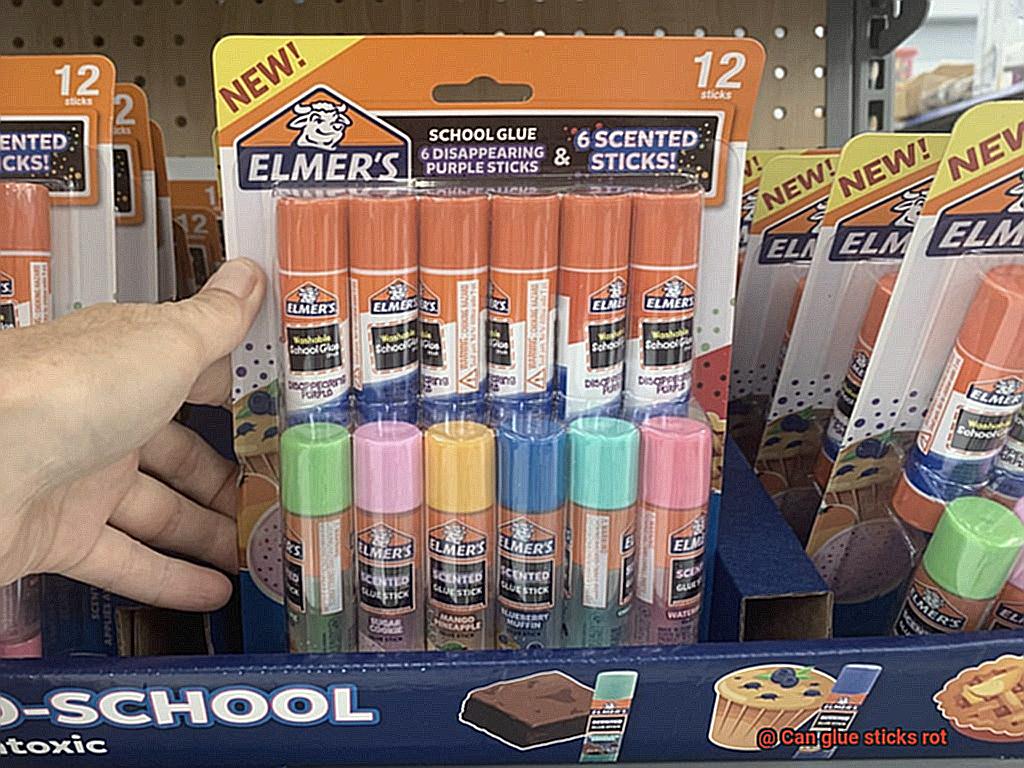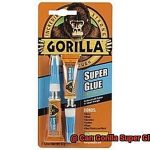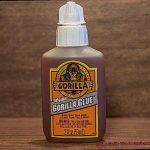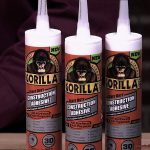Are you tired of losing your most trusted glue sticks or finding them less effective than before? Perhaps you’re wondering if glue sticks can rot over time. This is a common concern among crafters, educators, and DIY enthusiasts alike since glue sticks are essential tools for many projects and activities.
Glue sticks are typically made from non-toxic materials such as polyvinyl alcohol (PVA) and water, making them safe to use and easy to clean up. However, even though they’re designed to be long-lasting, they can still degrade over time due to various factors.
In this blog post, we’ll delve into the question of whether glue sticks can rot and what causes their degradation. We’ll also provide some pointers on how to store and maintain your glue sticks correctly to prolong their lifespan and prevent them from rotting.
Don’t let your beloved adhesive tools go down the drain. Keep reading to uncover the truth about glue stick rot and learn how to keep your crafting game sharp with top-notch adhesive tools.
What is a Glue Stick?
Contents

A glue stick is a must-have adhesive tool that helps bond materials like paper, cardboard, and more.
A glue stick consists of a solid glue substance that is enclosed in a plastic casing, making it easy to use and clean up. You simply twist the bottom of the casing to push up the glue and apply it to the surface you want to bond. This simple yet effective design has made glue sticks a popular choice for both home and office use.
The adhesive substance used in a typical glue stick is made up of synthetic polymers such as polyvinyl acetate (PVA) or ethylene-vinyl acetate (EVA). These polymers are designed to provide a strong and long-lasting bond while also being easy to apply. The versatility of these synthetic polymers makes them excellent for bonding various materials together.
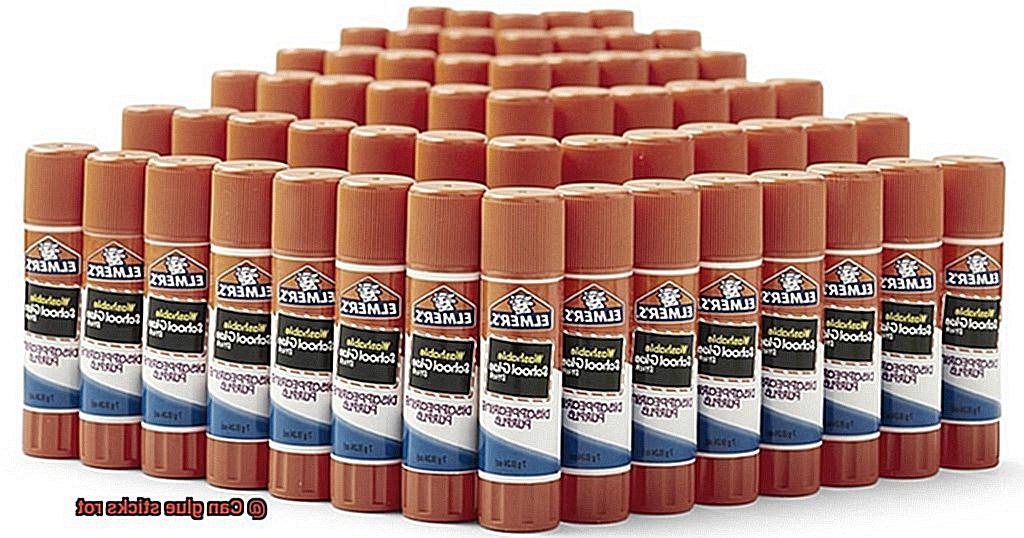
Glue sticks come in different sizes and colors, ranging from small 7-gram sticks to larger 40-gram sticks. Some even come scented, adding an extra sensory experience to the bonding process. Whether you need a small amount of glue for a quick fix or a larger amount of glue for a bigger project, there’s always a glue stick size that fits your needs.
It’s important to note that glue sticks can lose their effectiveness over time due to various factors such as age, exposure to air, heat, or moisture. Proper storage and timely replacement can prevent the deterioration of the adhesive properties, making sure your glue stick remains reliable when bonding your materials together.
Do Glue Sticks Rot?
The answer is not as simple as yes or no.
Firstly, it’s crucial to understand that glue sticks are made of different ingredients depending on the brand and type of glue stick. Typically, synthetic polymers like EVA or PVA are used in most glue sticks. These ingredients are renowned for their ability to maintain their adhesive properties over time.
This means that if you store your glue stick in a cool and dry environment, it can last for years without rotting or losing its effectiveness. However, exposure to heat or moisture can lead to breakdown and loss of adhesive properties.
What about natural-based glue sticks made from animal-based glues or plant-based adhesives? These may be more prone to rotting compared to synthetic-based glue sticks. This is because they can attract insects or bacteria that can break down the adhesive properties. To prevent this from happening, store them properly and take extra precautions to avoid any potential rotting.
In conclusion, while most synthetic-based glue sticks do not rot, it’s crucial to store them correctly in a cool and dry environment for optimal effectiveness over time. On the other hand, natural-based glue sticks require extra care and attention in storage to avoid rotting. Here are some tips to keep your glue stick in tip-top shape:
- Store your glue stick in a cool and dry place away from any sources of heat or moisture.
- Replace your glue stick if you notice any changes in its texture or adhesive properties.
- For natural-based glue sticks, consider storing them in an air-tight container or adding a desiccant packet to absorb moisture.
Factors that Affect Glue Stick Deterioration
Temperature is critical when it comes to glue sticks. High temperatures can cause them to melt or soften, while low temperatures can make them brittle and hard to use. To prevent this, store your glue sticks at room temperature or below. Avoid leaving them in a hot car or a sunny windowsill. Instead, keep them in a cool and dry place.
Humidity is another factor that can impact glue stick performance. High humidity can cause them to become sticky or gummy, while low humidity can make them dry out and lose their adhesive strength. So, it’s best to store them in a cool and dry place away from high levels of humidity.
UV radiation is an often-overlooked factor that affects glue stick deterioration. Exposure to sunlight or other sources of UV radiation can break down the glue stick over time, causing it to lose its adhesive properties. To prevent this, store them in a dark place or use a protective cover to shield them from UV radiation.
Lastly, exposure to air can cause glue sticks to dry out and lose their adhesive strength. Therefore, it is crucial to keep the cap on your glue stick when not in use and store it in an airtight container if possible.
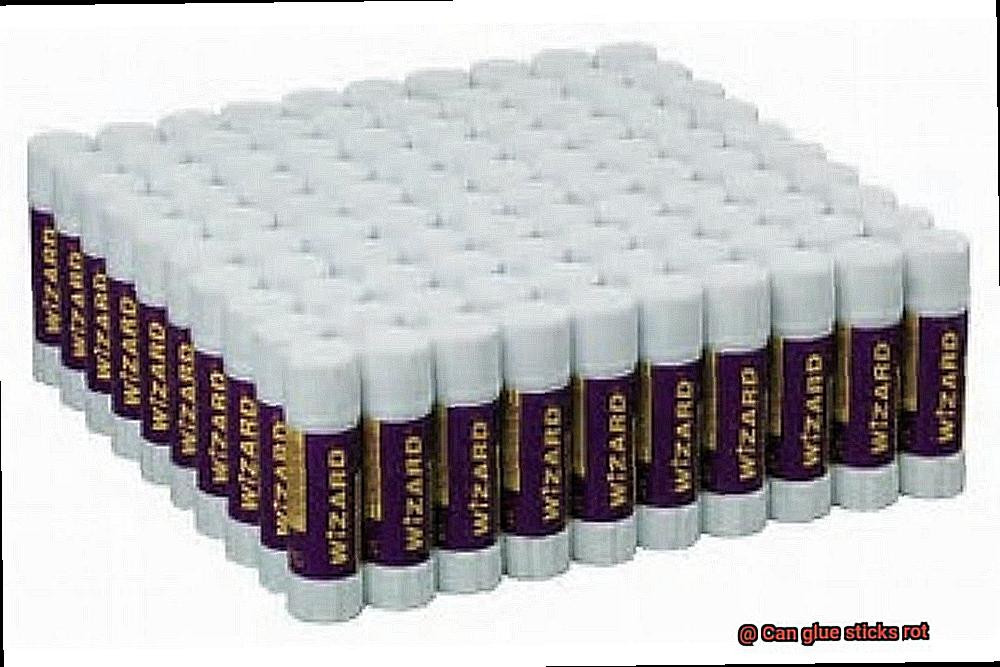
Age
The quality and performance of a glue stick can be significantly affected by its age. Over time, the adhesive properties of a glue stick can deteriorate, causing frustration for users when their projects don’t stick together as they should.
The lifespan of a glue stick depends on various factors such as brand, storage conditions, and frequency of use. Generally, most glue sticks have a shelf life of about two years, but this could vary depending on the type of glue stick and manufacturer’s recommendations.
It’s important to note that even if a glue stick has not reached its expiration date, it may still be impacted by age. If a glue stick has been stored in hot or humid environments or exposed to direct sunlight for long periods, its adhesive properties can be compromised.
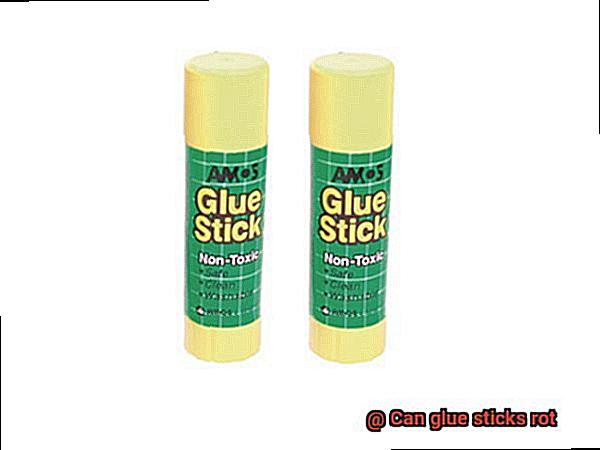
To ensure that your glue sticks last as long as possible, proper storage is essential. Keep them in a cool, dry place away from direct sunlight and avoid storing them in areas with high humidity or extreme temperatures. Remember to keep the cap on when not in use and handle them with care like a delicate flower.
Exposure to Heat and Moisture
As a glue stick aficionado, I know firsthand that exposure to heat and moisture can be the arch-nemesis of your beloved adhesive tool. It may seem trivial, but proper storage practices can significantly impact the lifespan and effectiveness of your glue sticks. Here are some tips and tricks to keep your glue sticks in tip-top shape and how to salvage them if they’ve been exposed to extreme conditions.
Let’s start with heat. Similar to a chocolate bar left in the sun, glue sticks don’t fare well in high temperatures. Prolonged exposure to heat can cause the glue to break down, leading to a loss of adhesive properties. So, it’s essential to keep your glue sticks away from sources of heat like radiators or heaters. To ensure optimal use, store them in a cool, dry place.
But what about moisture? If you live in a tropical climate or accidentally spill water on your glue stick, you may notice a degradation in its effectiveness. Water can penetrate the glue, causing it to lose its hold over time. To prevent this, store your glue sticks in an airtight container or bag to guard against moisture intrusion.
Now, let’s say you’ve already exposed your glue stick to heat or moisture – what should you do? Don’t fret; there are still ways to salvage it. If the glue has become too soft due to heat exposure, place it in the fridge for a few hours to harden it back up. If moisture has seeped into the adhesive, try drying it out by leaving it in a warm, dry place for several hours.
Exposure to Air
Exposure to air is one of the main culprits behind the premature demise of these adhesive tools.
As an expert in all things glue sticks, I can confirm that air exposure can have a significant impact on the longevity and effectiveness of these sticky solutions. Here’s what you need to know:
Firstly, when exposed to air, glue sticks can dry out and become brittle. This can cause them to lose their adhesive properties and become ineffective. The rate at which glue sticks dry out can vary depending on the humidity and temperature of the environment. High humidity can slow down the drying process while low humidity can speed it up.
Secondly, exposure to air can also cause discoloration and changes in texture over time. Glue sticks may begin to yellow or darken in color due to a chemical reaction between the synthetic polymers and oxygen in the air. Changes in texture may also occur as the glue dries out and becomes more brittle.
To prevent your glue sticks from drying out, it is essential to store them properly. Keep them in a cool, dry place away from direct sunlight and heat sources. Ensure that they are stored in an airtight container or bag to prevent exposure to air.
Lastly, not all glue sticks are created equal when it comes to their resistance to air exposure. Some brands may be more prone to drying out or discoloration than others. Always read product labels and reviews before purchasing glue sticks to ensure that you are getting a high-quality product that will meet your needs.
Types of Glue Sticks and Their Susceptibility to Deterioration
Glue sticks are a staple in every household, but not all of them are created equal. Some glue sticks are more susceptible to deterioration than others, depending on their composition and storage conditions. Let’s delve deeper into the different types of glue sticks and their susceptibility to deterioration.
Synthetic Polymer Glue Sticks
Made from materials like PVA and EVA, these glue sticks have a longer shelf life and are less likely to deteriorate over time. As they contain fewer organic compounds that can break down and cause the adhesive to lose its effectiveness, they remain strong and effective for a longer period.
Natural Glue Sticks
These glue sticks are made from natural ingredients such as animal or vegetable-based adhesives. While they may be eco-friendly, they are more susceptible to deterioration over time, especially when exposed to air or moisture. This can cause the glue to dry out, become less adhesive, or even develop an unpleasant odor.
White Glue Sticks
White glue sticks made from PVA are popular for their strong adhesion and versatility. However, if not stored properly, they can dry out and become brittle over time, losing their effectiveness.
Hot Melt Glue Sticks
These glue sticks are made from thermoplastic polymers that are melted and applied using a heated glue gun. They provide an incredibly strong bond and ideal for use on a wide range of surfaces; however, they can start breaking down and losing their adhesive properties when exposed to high temperatures or UV light.
Specialty Glue Sticks
Specialty glue sticks such as those made for specific materials like fabric or wood often have unique formulations that make them more resistant to deterioration. Fabric glue sticks are often water-resistant and can withstand multiple washings without losing their hold.
To ensure maximum lifespan of your glue sticks, it is crucial to store them properly. Keep them in a cool, dry place away from direct sunlight and sources of heat. It’s also important to check the expiration date on the packaging before using any glue stick, as expired products may not work as effectively as fresh ones.
Preventing Glue Stick Deterioration
I have some expert tips on how to prevent glue stick deterioration and keep your adhesive fresh and ready to use.
Firstly, storage is key. To ensure your glue sticks stay in tip-top condition, store them in a cool, dry place away from direct sunlight and heat sources. This will prevent the glue inside the stick from drying out and becoming less effective. It’s also important to store your glue sticks horizontally to avoid air bubbles forming inside the tube, which can cause the glue to dry out.
Next up, proper usage. When applying your glue stick, make sure you do so evenly and avoid using too much pressure. Overuse of pressure can cause the glue to become compressed and harden, rendering it difficult to apply or even unusable. And when you’re finished using your glue stick, always replace the cap to prevent air from getting inside and drying out the adhesive.
Finally, choosing a high-quality glue stick is essential for preventing deterioration. Cheaper options may contain lower quality adhesives that are more prone to drying out or becoming unusable over time. Investing in a higher quality adhesive might be more expensive initially but will save you money in the long run by preventing the need for frequent replacements.
Conclusion
In summary, the question of whether glue sticks can rot is a nuanced one. While synthetic polymer glue sticks are generally more resistant to deterioration, natural-based options require extra care and attention when it comes to storage. Factors such as temperature, humidity, UV radiation, exposure to air, age, and even heat and moisture can all impact the lifespan and effectiveness of your adhesive.
To ensure your glue stick remains in tip-top condition for longer, it’s essential to store it in a cool, dry place away from direct sunlight and sources of heat. Proper usage is also critical – apply your glue stick evenly and avoid using too much pressure. Opting for high-quality glue sticks is also crucial for preventing deterioration.

